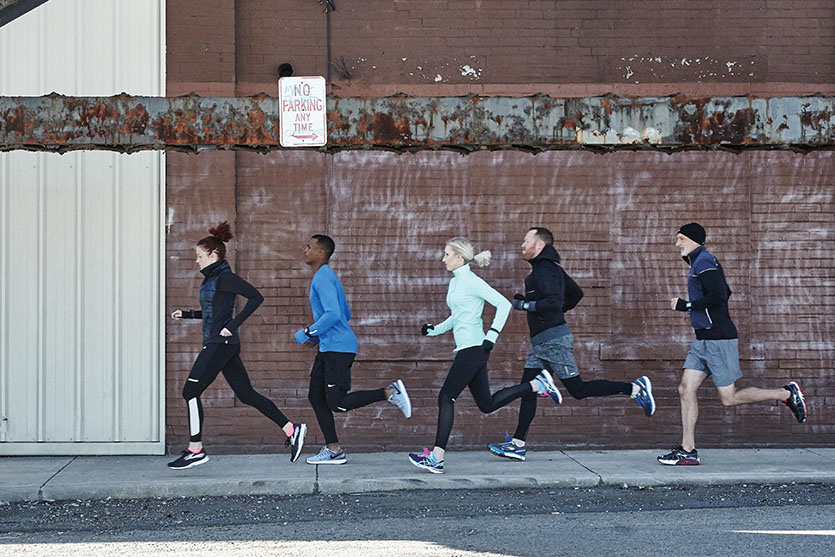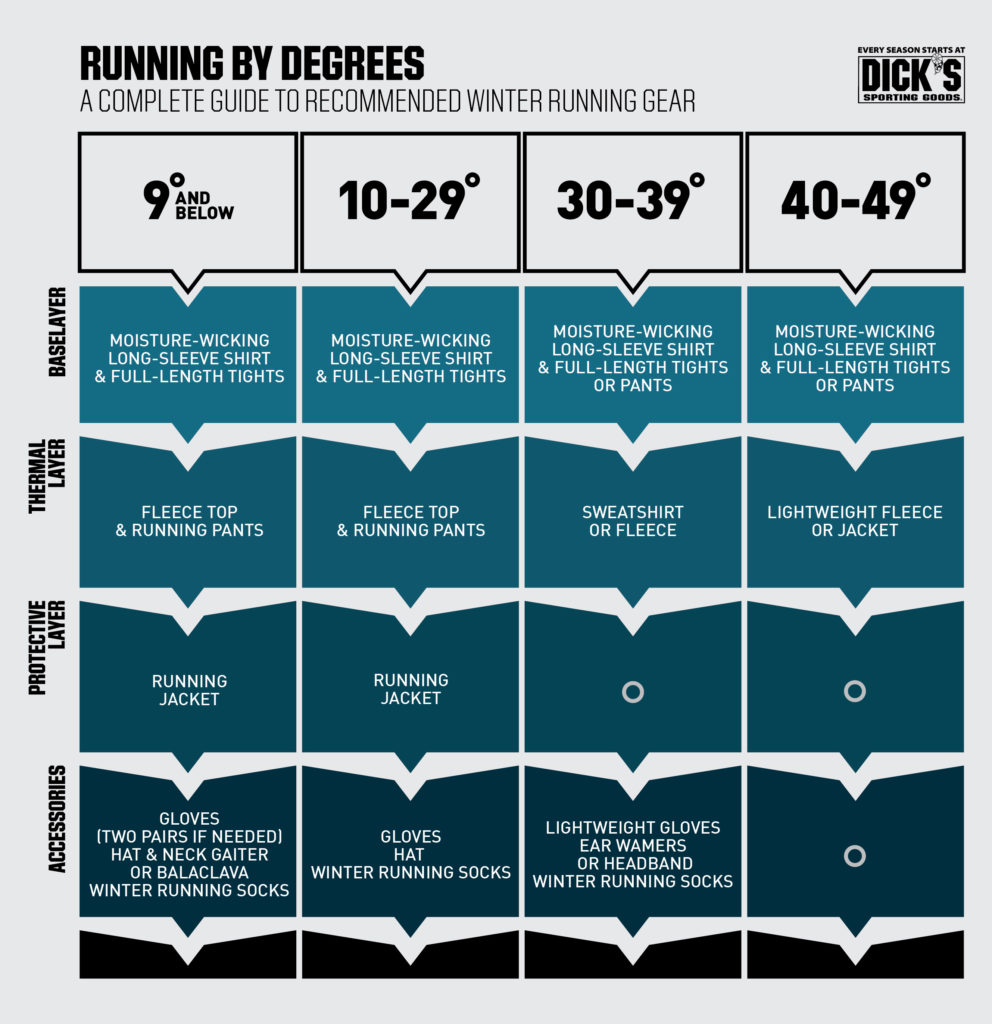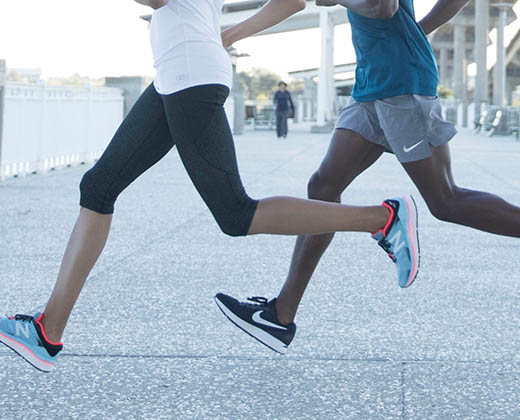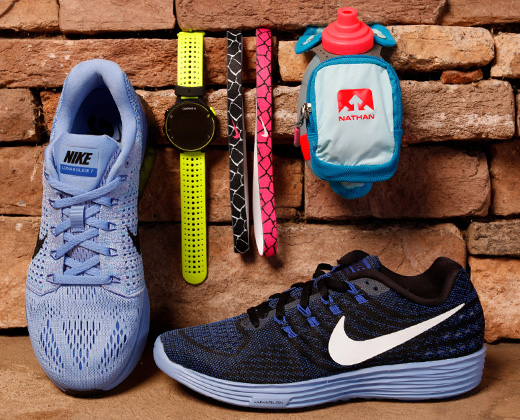How to Dress for Winter Running Success
Running is a way of life to some and doesn’t end when the temperatures drop below 40 degrees.

There’s an old saying: “There’s no such thing as bad weather, only unsuitable clothing.” Who said it first is a matter for debate. But, it’s not about who came up with the concept first. It’s the core message that we care about most.
Dressing properly could help you thrive in any kind of weather. This includes dressing for wintertime running. With this in mind, you can use the chart below as a tool to assist you in choosing which clothing could help you take on the cold weather and keep up with your training. Follow along with our DICK’S Sporting Goods Run Ambassadors and discover helpful tips on how to dress for progress.
Some runners run hot, others run cool; some sweat a lot, others hardly at all. This is to say that the first order of business is dress for your comfort. Run Ambassador Amy Adkins adds, “It truly goes back to the runner and what’s most comfortable for them. So, what works for me may not work for someone else.”
Just keep the following in mind when choosing your winter workout gear:
MOISTURE-WICKING BASELAYER
The importance of moisture-wicking aspect of this layer cannot be emphasized enough, because it can become very dangerous in frigid temperatures to keep sweat trapped close to the skin. You may be asking, if you’re warm enough to sweat, what’s the difference? The difference is moisture against your skin promotes rapid heat loss, which could quickly lead to dangerously low body temperatures and hypothermia.
THERMAL LAYER
The thermal layer is important to trap heat so you don’t get too cold from the weather nor too warm from your exercise. Some higher-quality thermal gear provides strategic vents that may help equalize the heat.
PROTECTIVE LAYER
This layer is less about keeping heat in than it is about keeping the elements out. A good protective layer is specially designed to keep out rain, slush and wind while allowing the thermal layer to do the work necessary to keep you warm. Run Ambassador Ryan Marshall says a premium running jacket can be helpful in achieving this locked-in comfort. “When the wind hits, it doesn’t penetrate through the jacket. It deflects off, so it really helps to keep you warm and keeps the wind from cutting through you.”
ACCESSORIES
Adkins states you should also protect your head with a warm, comfortable running hat when running in the cold. “That’s going to be the first part of you that’s going to cool down and if you’re getting in your own head about stuff like that, it can mess up your run.”
Using running gloves, ear warmers, neck gaiters and balaclavas could also help keep your extremities warm in inclement conditions. Marshall adds that a quality pair of winter running socks can also enhance your experience. “For winter, it’s nice to have the thicker [socks]. They’re still light, but they keep your feet warmer while also wicking away the moisture,” he says.
It’s recommended that you also protect your feet with shoes built for the fourth season. Most big name brands provide shoes that offer protection against rain and snow, as well as low temperatures and low-light situations. Look for features like reflective details and uppers made from weatherproof materials.
While winter conditions might prevent you from achieving a personal best, it shouldn’t stop you in your tracks altogether.









